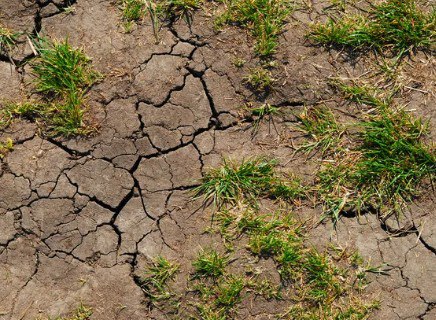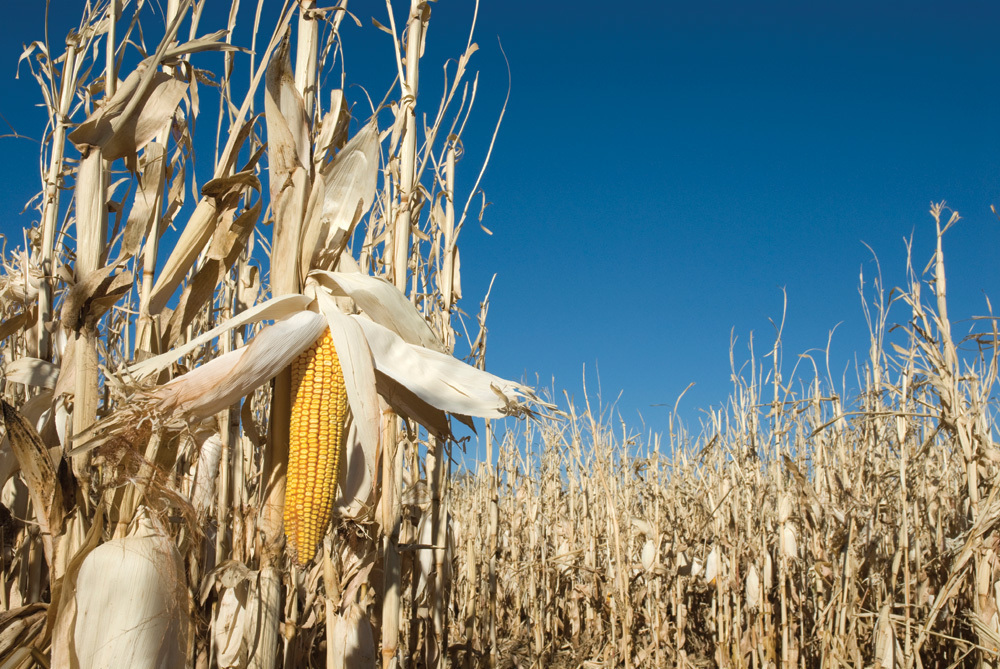Farming, fertilizer and the future: How is manure tech is evolving in Ohio? – wtol.com

Report on Advanced Agricultural Waste Management and its Alignment with Sustainable Development Goals
1.0 Introduction
The agricultural sector is undergoing a significant technological transformation in its approach to manure management, driven by increasing environmental concerns. This evolution is critical for mitigating the ecological footprint of farming and directly supports the achievement of multiple United Nations Sustainable Development Goals (SDGs). Advanced systems are converting agricultural byproducts from a liability into a valuable resource, fostering a more sustainable and circular economy.
2.0 Technological Innovations in Manure Management
Modern agricultural practices are integrating high-tech solutions to optimize the handling and reuse of manure. These innovations are pivotal in addressing environmental challenges and enhancing operational efficiency. Key technologies include:
- Anaerobic Digestion: Systems that break down manure in the absence of oxygen to produce biogas (a renewable energy source) and digestate (a nutrient-rich fertilizer).
- Nutrient Recovery Technologies: Advanced filtration and separation processes that extract valuable nutrients like nitrogen and phosphorus, preventing them from polluting waterways and allowing for their targeted reuse.
- Precision Application Systems: GPS-guided and sensor-based equipment that ensures manure is applied to fields at optimal rates and locations, maximizing nutrient uptake by crops and minimizing runoff.
- Solid-Liquid Separation: Mechanical processes that divide manure into solid and liquid components, allowing for easier handling, storage, and specialized application of each fraction.
3.0 Contribution to Sustainable Development Goals (SDGs)
The adoption of advanced manure management technologies provides a direct and measurable contribution to several key SDGs. This strategic alignment underscores the importance of agricultural innovation in achieving global sustainability targets.
-
SDG 2: Zero Hunger
- By converting manure into high-quality, nutrient-rich organic fertilizers, these technologies enhance soil health and fertility.
- Improved soil leads to increased crop yields and food security, supporting sustainable agricultural production.
-
SDG 6: Clean Water and Sanitation
- Effective manure management prevents nutrient runoff (nitrogen, phosphorus) into rivers and lakes, protecting water resources from eutrophication and contamination.
- This directly contributes to the availability and sustainable management of clean water.
-
SDG 7: Affordable and Clean Energy
- Anaerobic digestion of manure produces biogas, a renewable energy source that can be used to generate electricity and heat for on-farm use or for export to the public grid.
- This reduces reliance on fossil fuels and promotes access to clean, sustainable energy.
-
SDG 12: Responsible Consumption and Production
- These technologies embody the principles of a circular economy by transforming a waste stream into valuable resources like energy and fertilizer.
- This promotes sustainable production patterns and reduces the overall environmental impact of agriculture.
-
SDG 13: Climate Action
- Proper management and processing of manure, particularly through anaerobic digestion, captures methane—a potent greenhouse gas—and prevents its release into the atmosphere.
- This constitutes a significant action in mitigating climate change.
-
SDG 15: Life on Land
- By preventing water and soil pollution, advanced manure management helps protect terrestrial ecosystems, preserve biodiversity, and combat land degradation.
1. Which SDGs are addressed or connected to the issues highlighted in the article?
The following Sustainable Development Goals (SDGs) are connected to the article’s discussion on transforming manure management in agriculture:
- SDG 2: Zero Hunger
- The article is set in the context of “agriculture,” which is the primary focus of SDG 2. The discussion on managing environmental impacts relates to the goal’s emphasis on achieving sustainable food production systems.
- SDG 6: Clean Water and Sanitation
- Improper manure management is a significant source of water pollution, as runoff can contaminate rivers, lakes, and groundwater with excess nutrients and pathogens. The article’s focus on managing this “environmental impact” directly connects to protecting water resources.
- SDG 9: Industry, Innovation and Infrastructure
- The article explicitly mentions a “high-tech transformation” in manure management. This points directly to SDG 9, which promotes inclusive and sustainable industrialization and fosters innovation, including the adoption of cleaner technologies in sectors like agriculture.
- SDG 12: Responsible Consumption and Production
- Manure is a waste product of agricultural production. The article’s theme of improving “the way manure is managed” aligns with SDG 12’s goal of achieving the environmentally sound management of all wastes to reduce their impact on the environment.
- SDG 13: Climate Action
- Manure decomposition releases potent greenhouse gases, particularly methane (CH4) and nitrous oxide (N2O). The “environmental impact” of agriculture mentioned in the article includes its contribution to climate change. Therefore, a “high-tech transformation” in manure management is a climate mitigation strategy.
- SDG 15: Life on Land
- The “environmental impact” of poor manure management includes soil and land degradation through nutrient imbalances and pollution. Sustainable management practices help protect terrestrial ecosystems, which is the core objective of SDG 15.
2. What specific targets under those SDGs can be identified based on the article’s content?
Based on the article’s focus, the following specific SDG targets can be identified:
- Target 2.4: “By 2030, ensure sustainable food production systems and implement resilient agricultural practices…”
- The article’s theme of addressing the “environmental impact” of “agriculture” through better “manure management” is a direct effort to implement sustainable agricultural practices that help maintain ecosystems and improve soil quality.
- Target 6.3: “By 2030, improve water quality by reducing pollution…”
- A “high-tech transformation” in manure management aims to prevent runoff and leaching into water bodies, thereby reducing water pollution from agricultural sources, which is the central aim of this target.
- Target 9.4: “By 2030, upgrade infrastructure and retrofit industries to make them sustainable, with… greater adoption of clean and environmentally sound technologies…”
- The phrase “high-tech transformation” directly corresponds to this target’s call for adopting new, cleaner technologies to make industries like agriculture more sustainable.
- Target 12.4: “…achieve the environmentally sound management of chemicals and all wastes throughout their life cycle…and significantly reduce their release to air, water and soil…”
- This target is highly relevant as manure is an agricultural waste. The article’s entire premise is about improving its management to minimize its negative “environmental impact” on air, water, and soil.
- Target 13.2: “Integrate climate change measures into national policies, strategies and planning.”
- The “increasing scrutiny” mentioned in the article often drives policy changes. Transforming manure management is a key measure to mitigate greenhouse gas emissions from agriculture, thus integrating climate action into the sector’s practices.
- Target 15.3: “By 2030, combat desertification, restore degraded land and soil…and strive to achieve a land degradation-neutral world.”
- Proper manure management is crucial for maintaining and improving soil health. The transformation discussed in the article contributes to preventing land degradation caused by agricultural pollution.
3. Are there any indicators mentioned or implied in the article that can be used to measure progress towards the identified targets?
The article does not explicitly mention any indicators, but they are implied by the problems being addressed. Progress could be measured by tracking the following:
- Implied Indicator for Target 6.3: Proportion of water bodies with good ambient water quality.
- The success of improved manure management would be reflected in reduced nutrient and pathogen loads in nearby water sources, thus improving water quality.
- Implied Indicator for Target 12.4: Amount of agricultural waste (manure) treated or repurposed.
- A “high-tech transformation” implies the adoption of systems that treat, process, or convert manure into other products (e.g., biogas, fertilizer). Tracking the volume of manure managed this way would measure progress.
- Implied Indicator for Target 13.2: Greenhouse gas emissions from the agricultural sector.
- Since manure is a source of methane and nitrous oxide, a key indicator of the effectiveness of new management technologies would be a measurable reduction in these emissions from agriculture.
- Implied Indicator for Target 2.4 / 15.3: Proportion of agricultural land under productive and sustainable agriculture.
- This can be measured through soil health metrics, such as soil organic matter or nutrient levels. Improved manure management directly contributes to better soil health and thus to the sustainability of agricultural land.
4. Summary Table of SDGs, Targets, and Indicators
| SDGs | Targets | Indicators (Implied) |
|---|---|---|
| SDG 2: Zero Hunger | 2.4: Ensure sustainable food production systems and implement resilient agricultural practices. | Proportion of agricultural land under productive and sustainable agriculture. |
| SDG 6: Clean Water and Sanitation | 6.3: Improve water quality by reducing pollution. | Proportion of water bodies with good ambient water quality. |
| SDG 9: Industry, Innovation and Infrastructure | 9.4: Upgrade infrastructure and retrofit industries to make them sustainable… with greater adoption of clean and environmentally sound technologies. | Adoption rate of high-tech manure management systems in the agricultural sector. |
| SDG 12: Responsible Consumption and Production | 12.4: Achieve the environmentally sound management of… all wastes… and significantly reduce their release to air, water and soil. | Amount of agricultural waste (manure) treated or repurposed. |
| SDG 13: Climate Action | 13.2: Integrate climate change measures into national policies, strategies and planning. | Total greenhouse gas emissions from the agricultural sector (specifically methane and nitrous oxide). |
| SDG 15: Life on Land | 15.3: Combat desertification, restore degraded land and soil. | Trends in land degradation and soil health on agricultural lands. |
Source: wtol.com

What is Your Reaction?
 Like
0
Like
0
 Dislike
0
Dislike
0
 Love
0
Love
0
 Funny
0
Funny
0
 Angry
0
Angry
0
 Sad
0
Sad
0
 Wow
0
Wow
0













































































